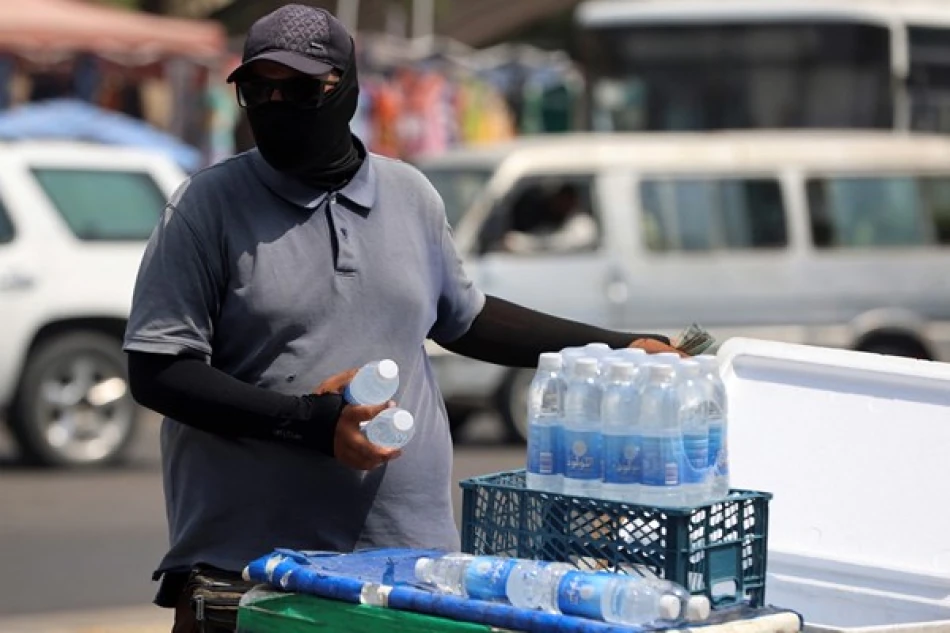
Iraq Scorches Under Relentless 50°C Heat Wave: Urgent Sun Exposure Risks Warning
Iraq Battles Extreme Heat Wave as Temperatures Soar Above 50°C Across Major Cities
Iraq is grappling with a punishing heat wave that has pushed temperatures above 50°C (122°F) across 11 central and southern provinces, forcing government offices to suspend operations and highlighting the country's vulnerability to increasingly severe climate extremes. The scorching conditions, driven by a thermal low-pressure system extending from the Arabian Peninsula, underscore the growing challenge of extreme weather in the oil-rich nation already struggling with infrastructure deficits.
Record-Breaking Temperatures Grip the Nation
Iraq's General Authority for Meteorology and Seismic Monitoring reported that temperatures reached between 50-51°C across major population centers including Baghdad, Karbala, Basra, and other key provinces in the country's heartland. Even typically cooler northern and western regions recorded temperatures between 44-49°C, indicating the heat wave's exceptional scope and intensity.
The extreme temperatures have prompted several provincial governments to either suspend official working hours entirely or significantly reduce them, a pragmatic response that reflects the reality of operating in conditions that pose genuine health risks to workers and the general population.
Infrastructure Under Pressure
This heat wave arrives at a particularly challenging time for Iraq, whose electrical grid has historically struggled to meet cooling demands during summer months. The country's power infrastructure, damaged by decades of conflict and underinvestment, typically faces severe strain when temperatures exceed 45°C. With readings now consistently above 50°C, the pressure on an already fragile system could trigger widespread blackouts precisely when air conditioning becomes a matter of survival rather than comfort.
Economic and Social Implications
The suspension of government operations and reduced working hours will likely impact Iraq's economic productivity during an already challenging period. For a country heavily dependent on oil revenues and government employment, extended heat-related shutdowns could compound existing fiscal pressures. The timing is particularly problematic as Iraq continues to rebuild its economy following years of conflict with ISIS and ongoing political instability.
Regional Climate Patterns and Global Context
Iraq's current heat wave reflects broader regional climate trends affecting the Middle East. Similar extreme temperatures have become increasingly common across the Arabian Peninsula, with Kuwait and Saudi Arabia regularly recording temperatures above 50°C during summer months. However, Iraq's position at the confluence of desert and more temperate zones traditionally provided some relief that appears to be diminishing.
The meteorological authority attributes the current conditions to a surface thermal low-pressure system extending from the Arabian Peninsula—a weather pattern that has become more intense and persistent in recent years. This aligns with climate projections suggesting the Middle East will experience some of the most severe temperature increases globally, potentially making parts of the region uninhabitable during summer months within decades.
Health Warnings and Public Safety Measures
Authorities have issued comprehensive health warnings urging citizens to avoid direct sun exposure during peak hours, increase fluid intake to prevent dehydration and heat exhaustion, and avoid leaving flammable materials in vehicles. These precautions reflect the serious health risks posed by temperatures that approach the upper limits of human tolerance, even with adequate hydration and shade.
Looking Ahead: The "Jamrat al-Qayz" Period
Government sources indicate the heat wave will persist through August, encompassing what locals call "Jamrat al-Qayz"—the ember of extreme heat. This traditional term for the year's hottest period suggests such conditions aren't entirely unprecedented, but the intensity and duration of current temperatures appear to exceed historical norms.
While meteorologists predict a slight temperature decrease beginning Tuesday, the relief will be relative—likely bringing temperatures down to the high 40s rather than providing genuine respite. This pattern of extreme heat punctuated by marginal cooling represents a new normal that Iraq's government and citizens must learn to navigate while addressing the underlying infrastructure and adaptation challenges that make such conditions particularly devastating.
Most Viewed News

 Layla Al Mansoori
Layla Al Mansoori






